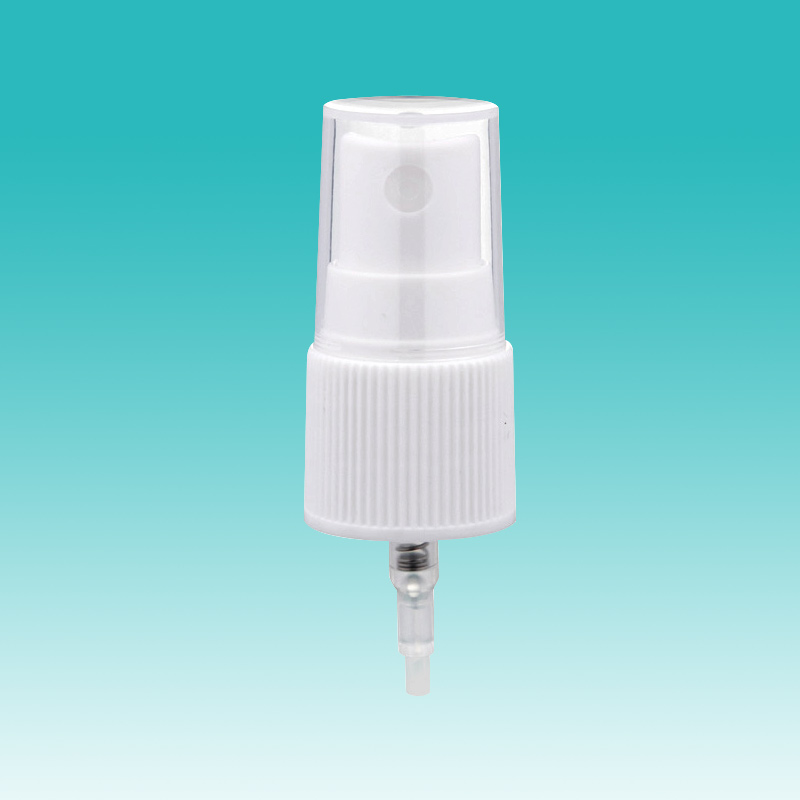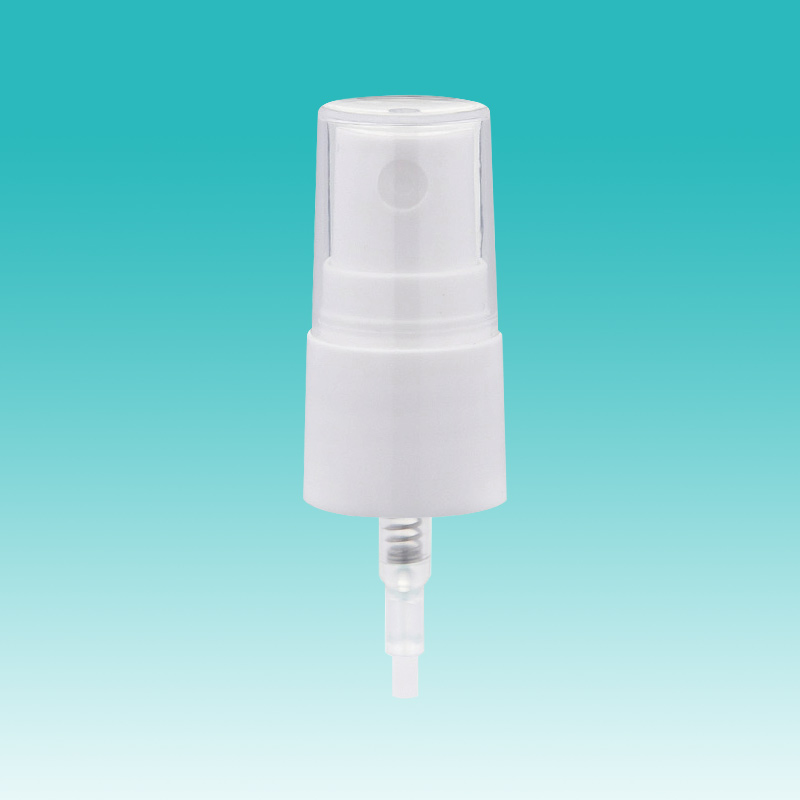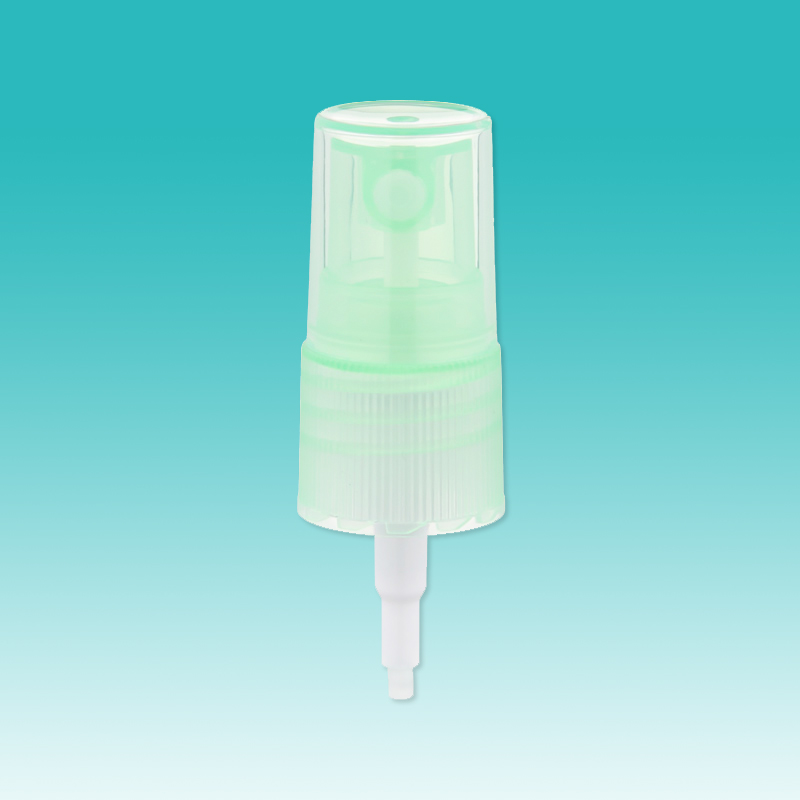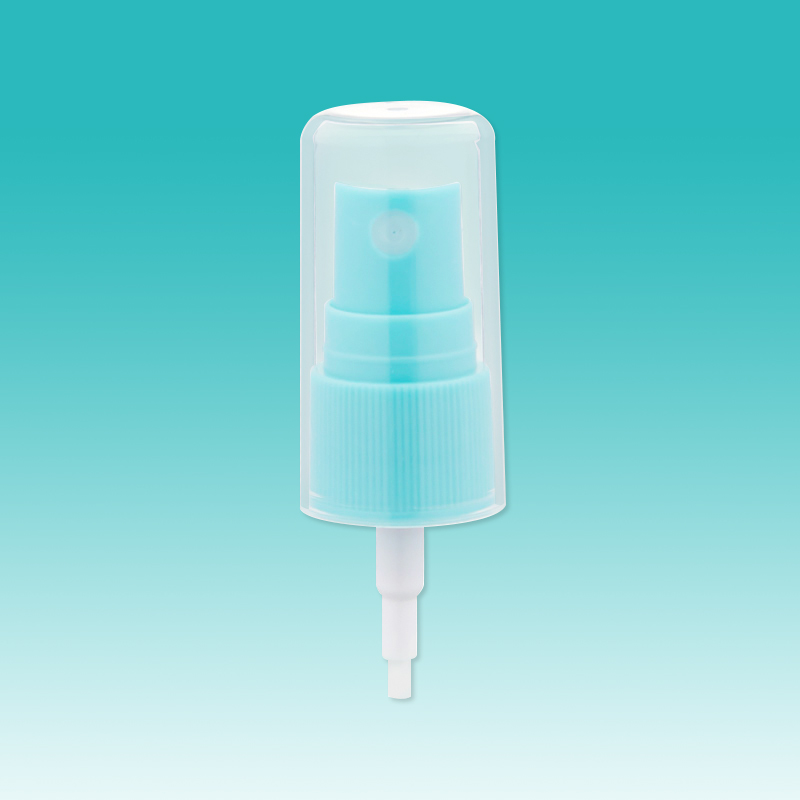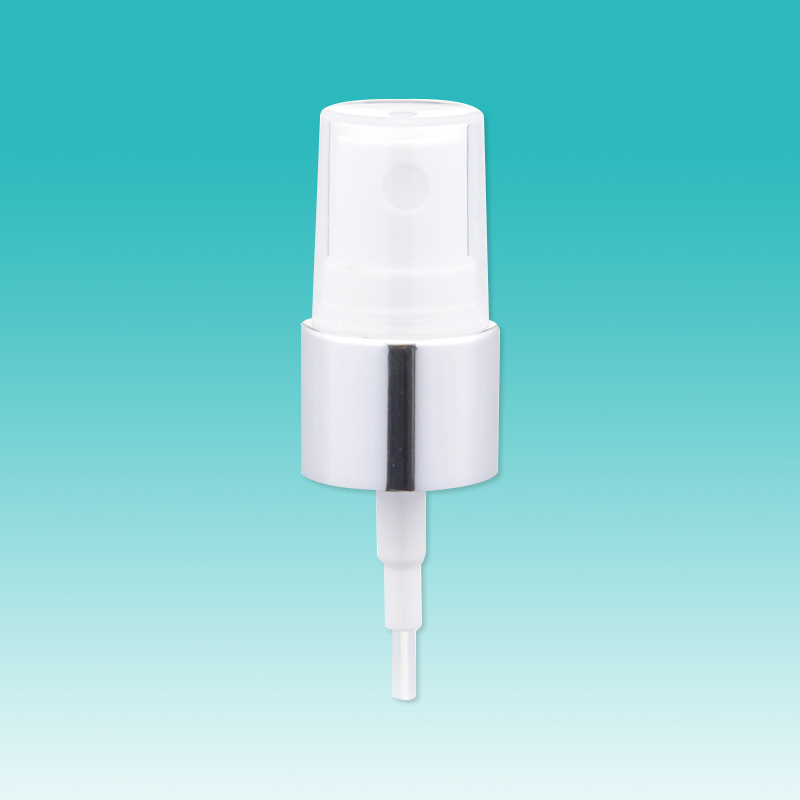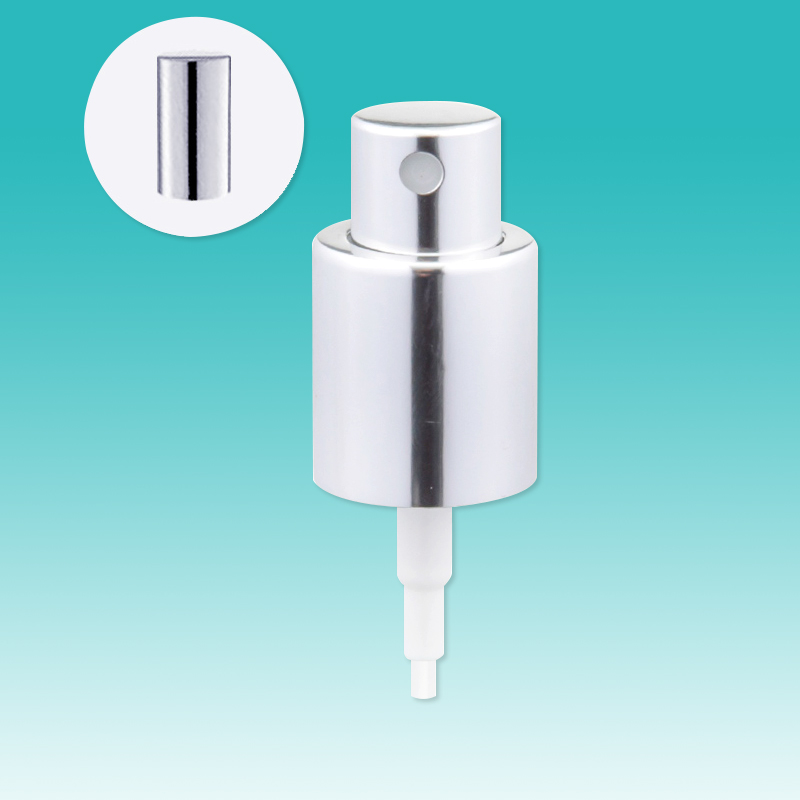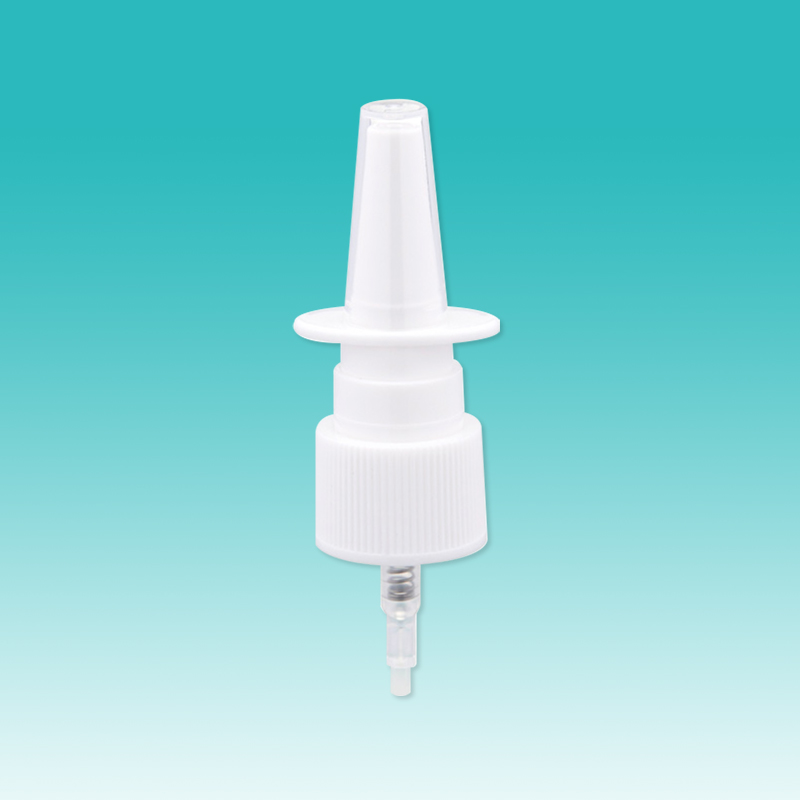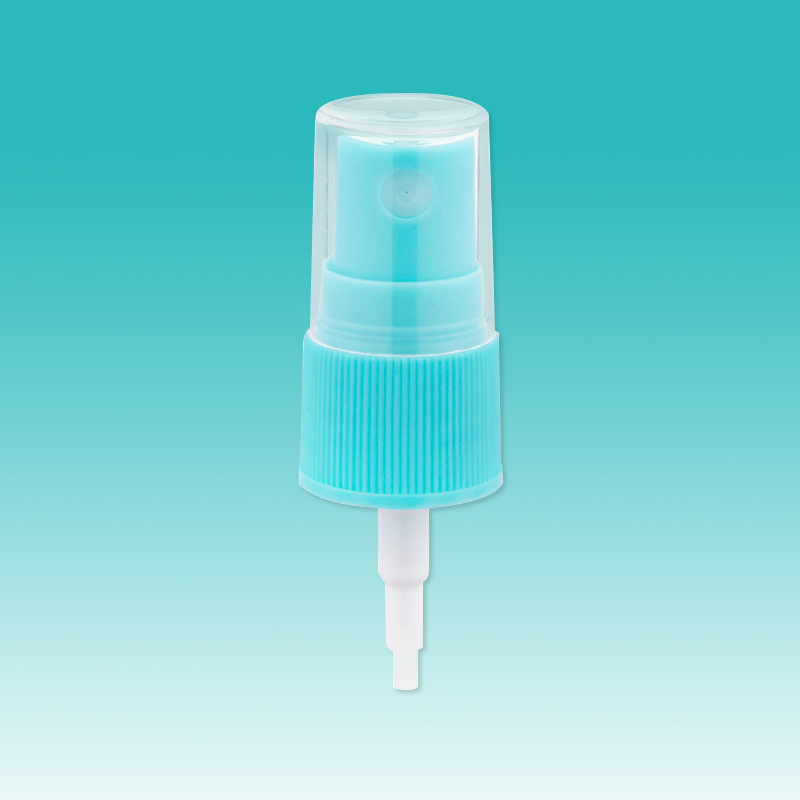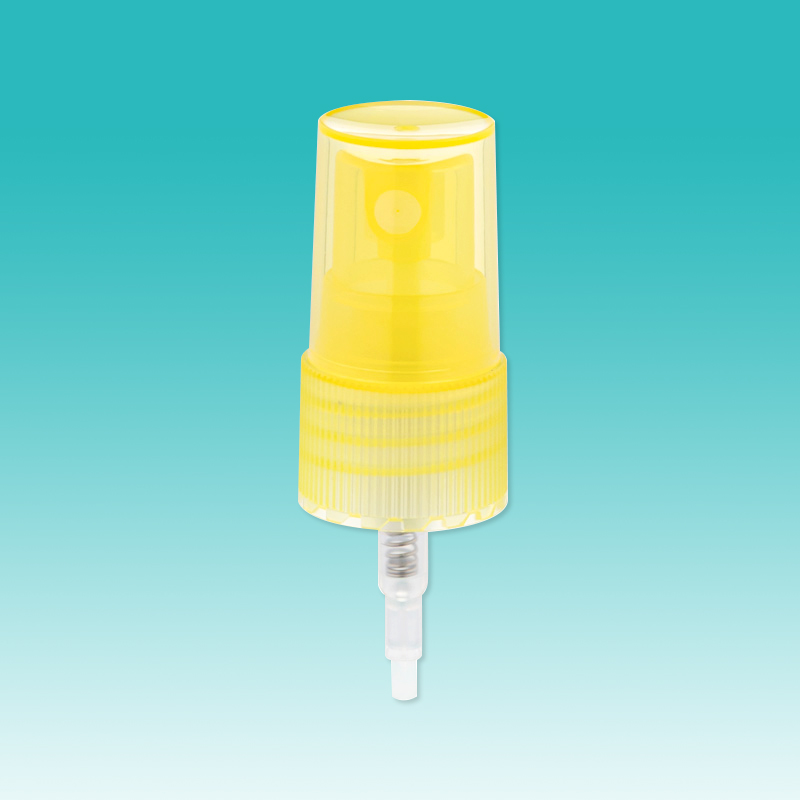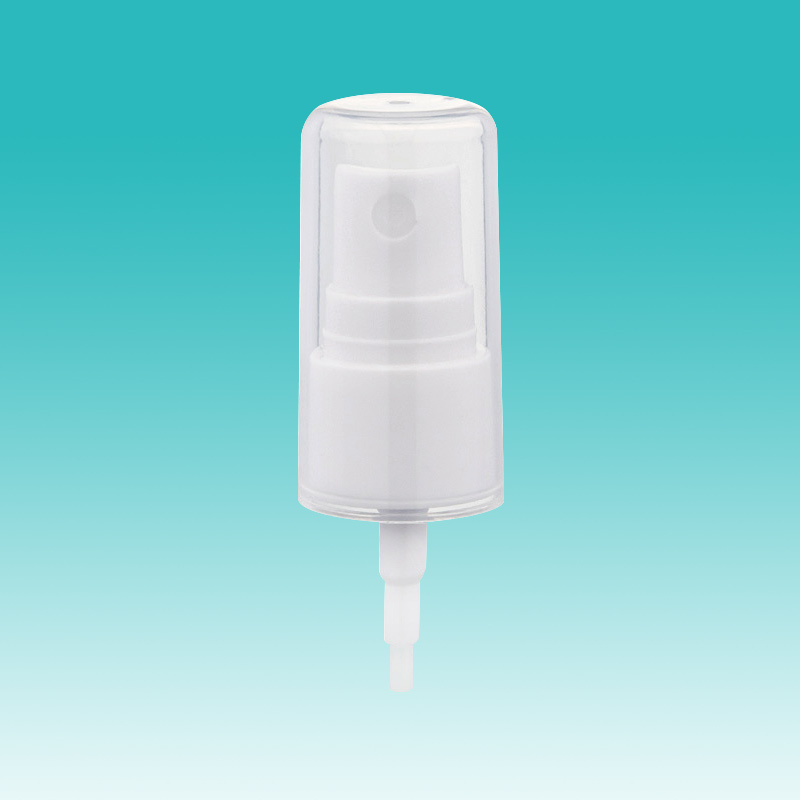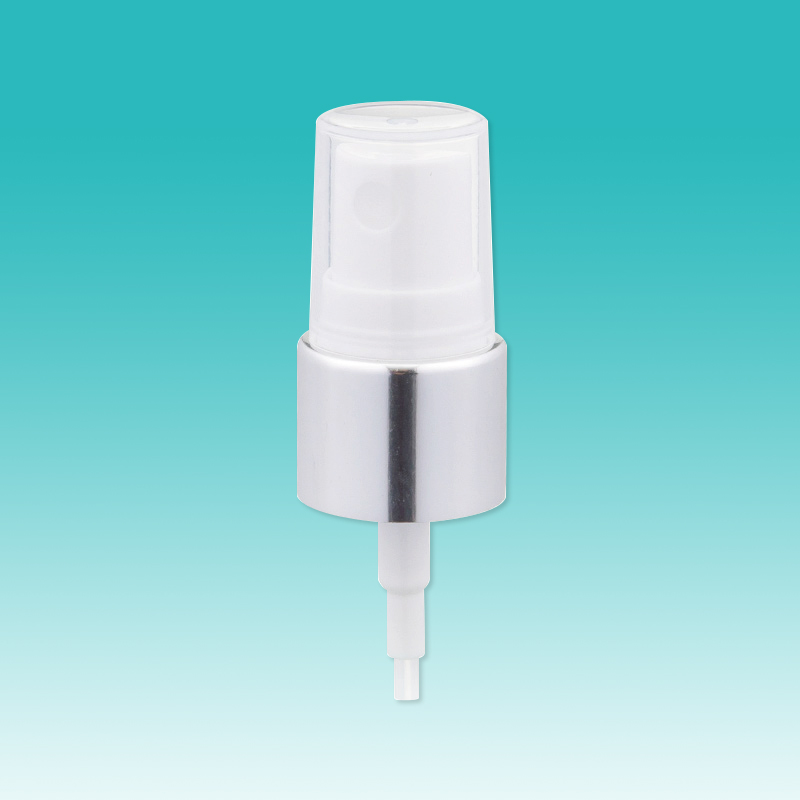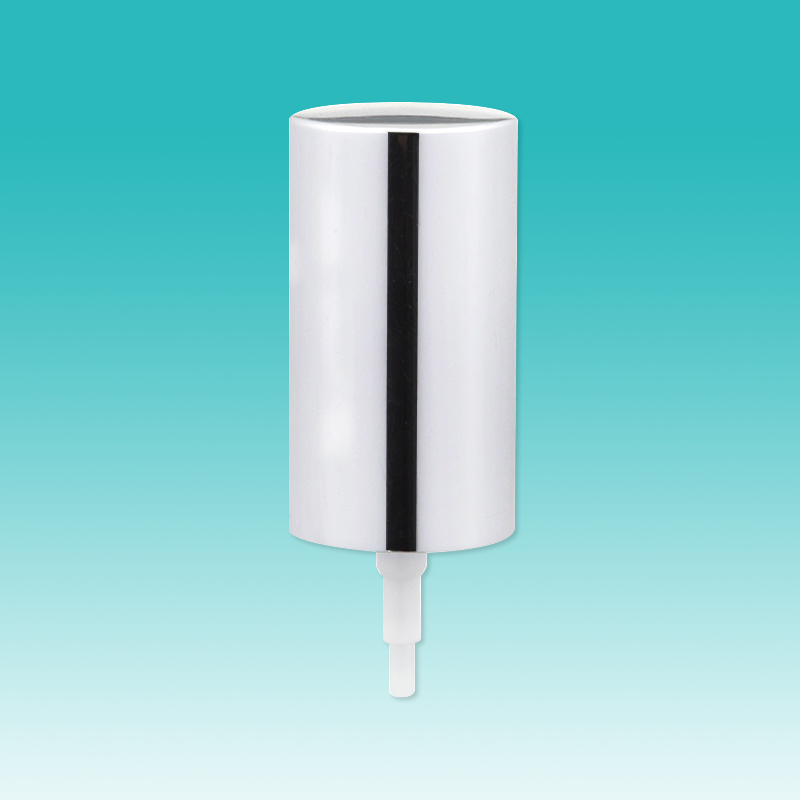There are hundreds of unique designs that may require different components than the ones we've shown here, but this article will give you an overview of how the fine mist sprayer works and how it turns a stream of liquid into a mist. Let's take a look at a plastic fine mist sprayer - commonly found in personal care and cleaning products, which emits a fine mist when the consumer dispenses the product.
These are the components of a fine mist sprayer:
1. Dust cap: Usually made of PP plastic and usually transparent, the dust cap is used as a dust cover and safety cap to prevent the actuator from collecting dust and preventing accidental activation. To help the package stand out on the shelf, dust caps can be produced from stock or in custom colors.
2. Actuator: Usually made of PP plastic, this is the component that the consumer presses down to eject the product from the bottle. Unlike the actuator on a lotion pump, the actuator on a fine mist sprayer has internal components, including an insert, that create a specific atomization pattern of the product being sprayed. Some fine mist sprayers have a lock feature to prevent accidental dispensing.
3. Insert: This tiny component consists of channels through which liquid flows to create a mist-like pattern. In many cases, the insert is mounted on the outside of the actuator, which is the part of the product that leaves the sprayer.
4. Closure: The component that fixes the whole component on the bottle. It is usually made of PP plastic and can come in a variety of finishes or designs - including ribbed, smooth, matte or glossy. In some cases, a metal casing can also be applied to further enhance the shelf appeal of the packaging.
5. Gasket: The outer gasket acts as a compressible seal, sealing the cap to the land area of the bottle to prevent leaks. Depending on the product/chemical composition, different gasket materials are required and it is a critical component that must be tested to ensure compatibility. It can be customized with different materials like BUNA, Neoprene, Plastic Rubber, and LDPE.
6. Mechanical device: usually composed of many parts such as piston, housing cover, valve stem, spring, seal, and overall housing, this is the part that transfers the product from the inside of the bottle to the actuator. Typically, when the actuator is pressed down, the spring compresses, drawing product through the dip tube into the housing interior. Subsequent actuation pumps fluid up the actuator through the piston and out of the pump through the actuator insert.
The parts that make up the mechanism vary by design, but the sprayer shown here consists of a piston, valve stem, spring, seal that fits inside the housing, and a housing cover. The mechanism is then mounted to the closure and snapped together with the actuator to secure it in place. Some sprayer designs will place the metal spring in a different position to create a metal-free channel.
7. Dropper: A thin, plastic tube that extends the reach of the sprayer to the bottom of the bottle. Unlike the dip tubes of lotion pumps, which are usually thicker, the dip tubes of fine mist sprayers are usually slightly curved to allow them to reach the bottom of the push-up area of the bottle and cut into a "V" shape or angle to avoid clogging. To learn how to measure and cut dip tubes, click here to see our other Quick Question Monday articles covering this topic.
Ningbo Aobang Sprayer Co.,ltd. specializes in the production and development of various perfume atomizers, perfume caps, and plastic bottles. We have an experienced R&D engineering team, 11 injection molding machines, dust-free assembly lines, and automated production lines in our facility. If you are looking for a reliable business partner, please contact us now.

 English
English عربى
عربى Español
Español 中文简体
中文简体
